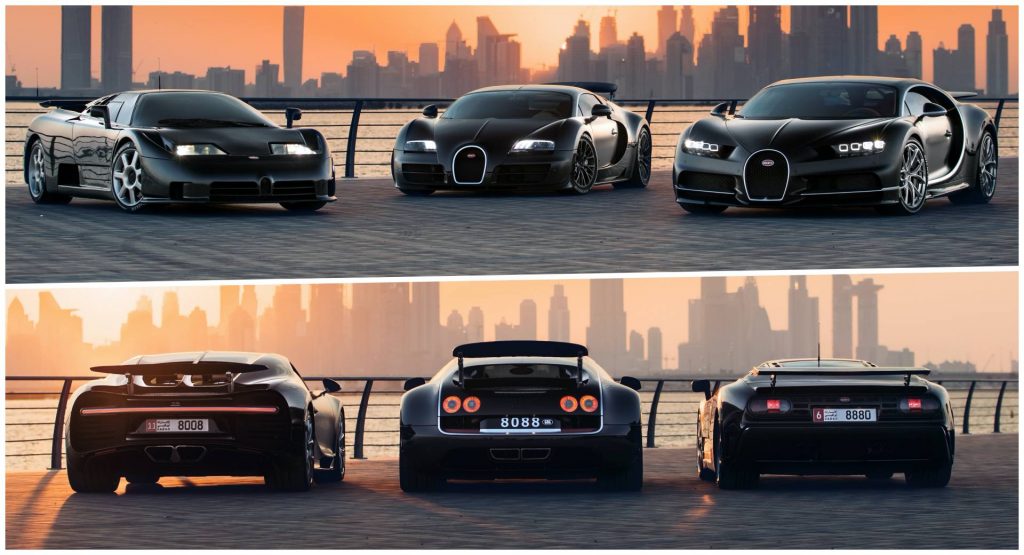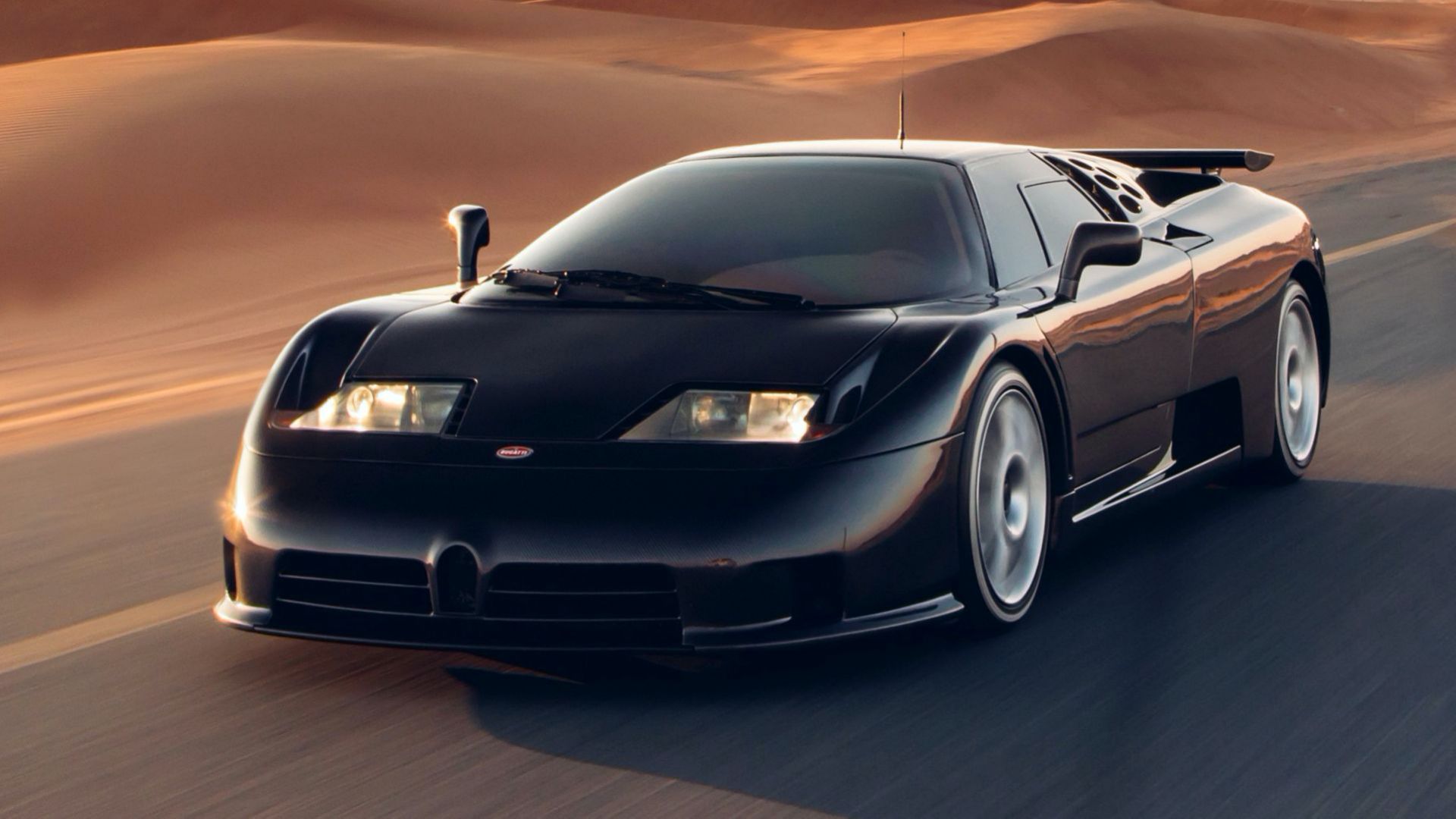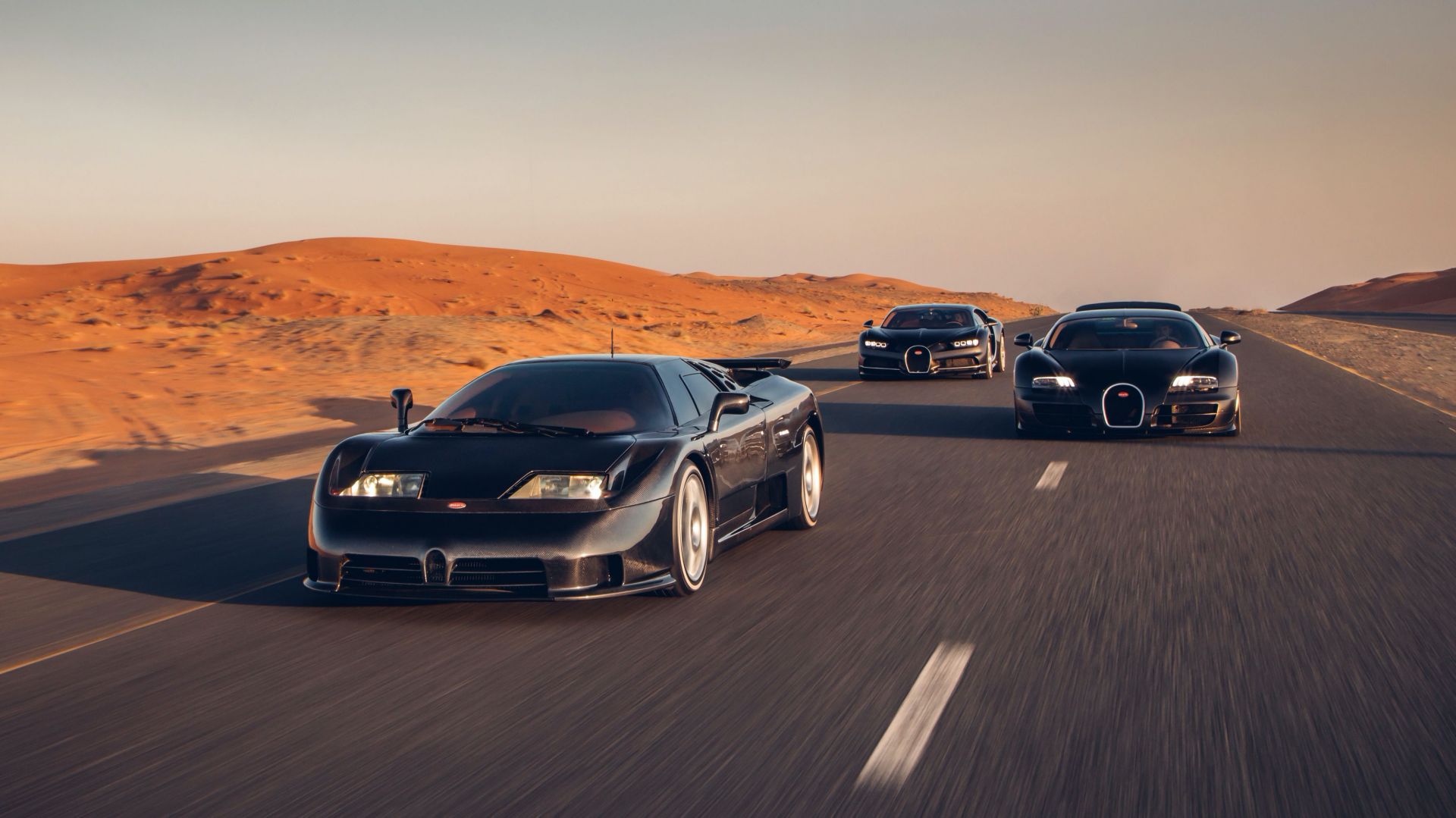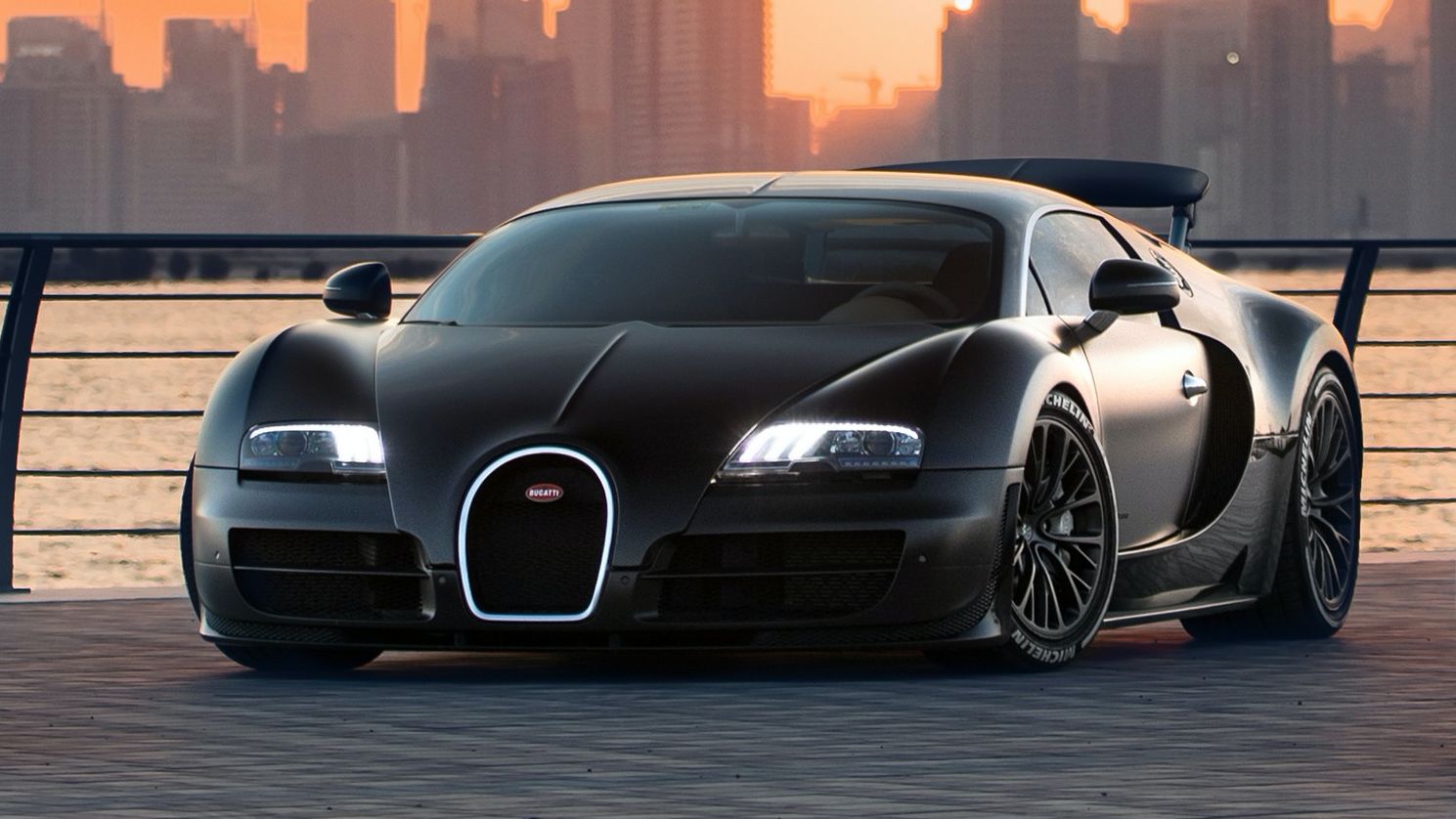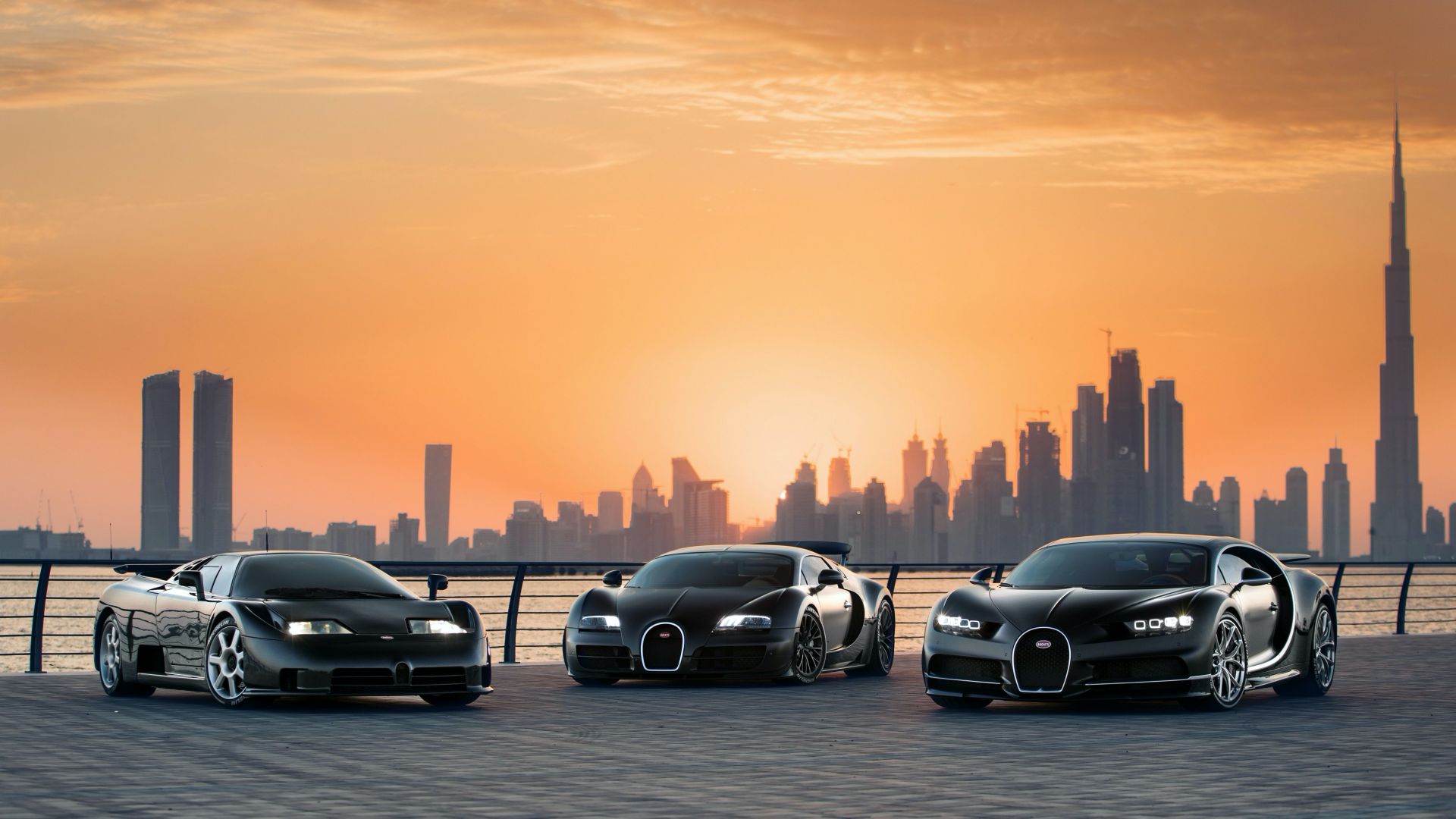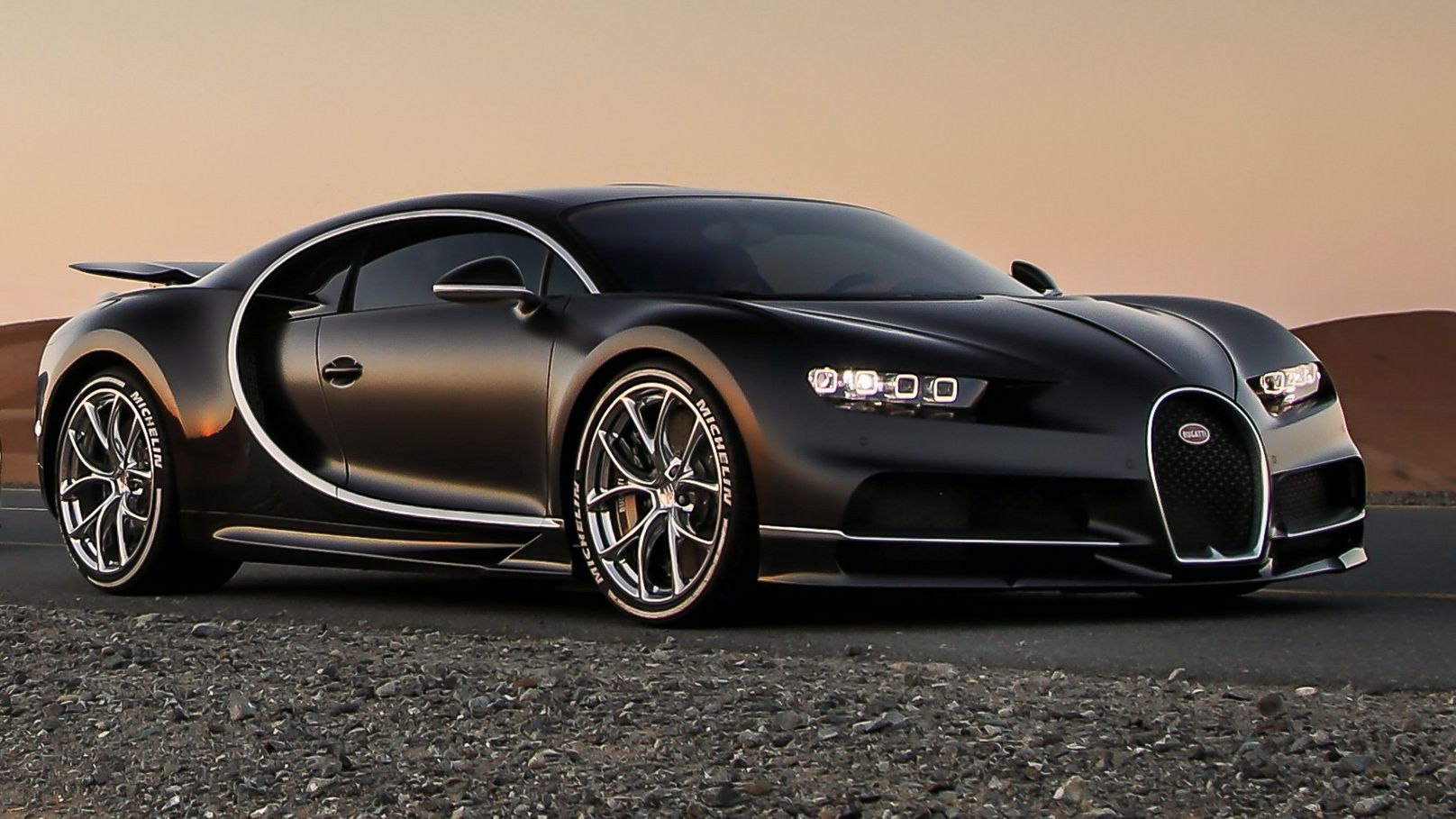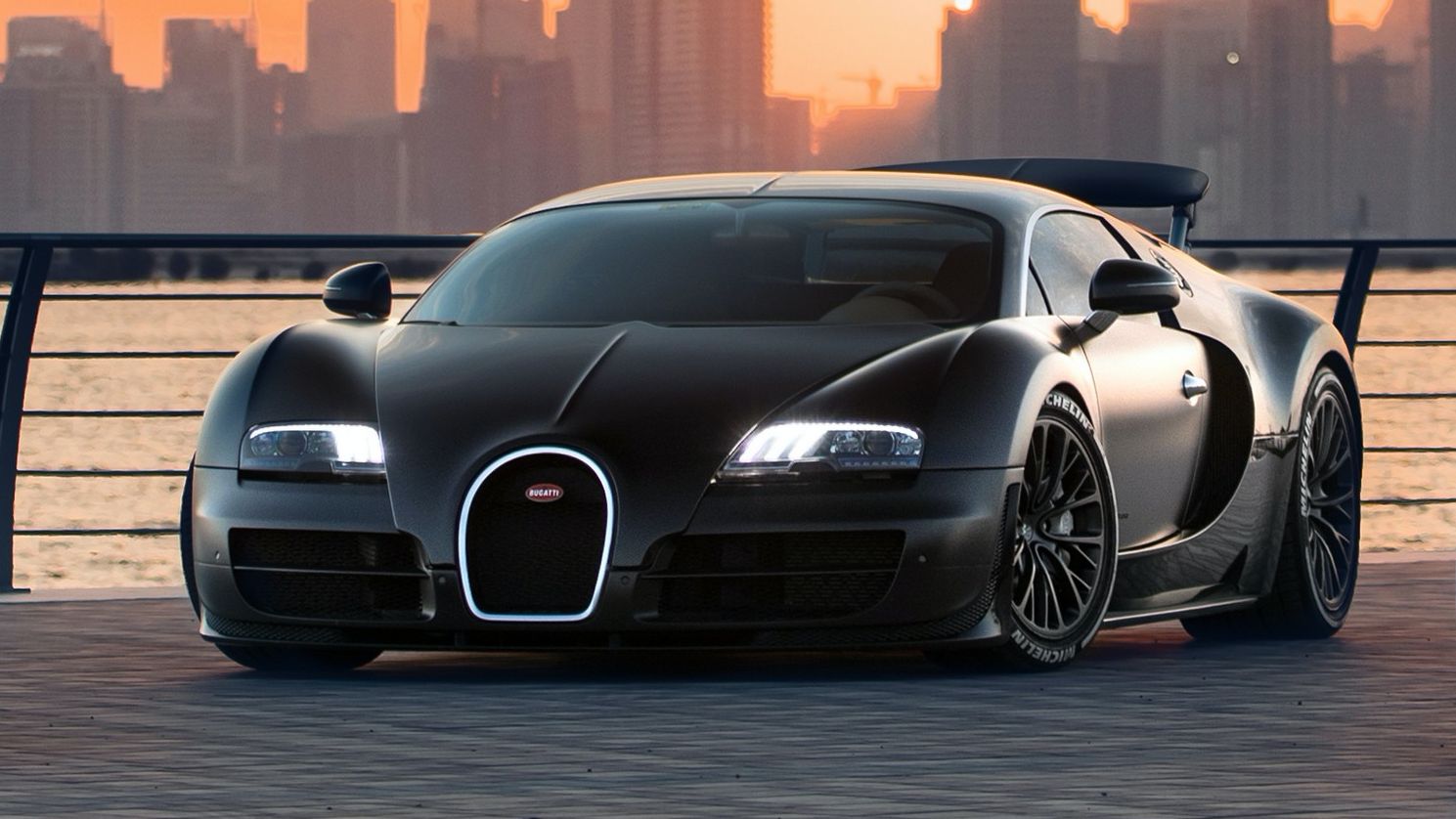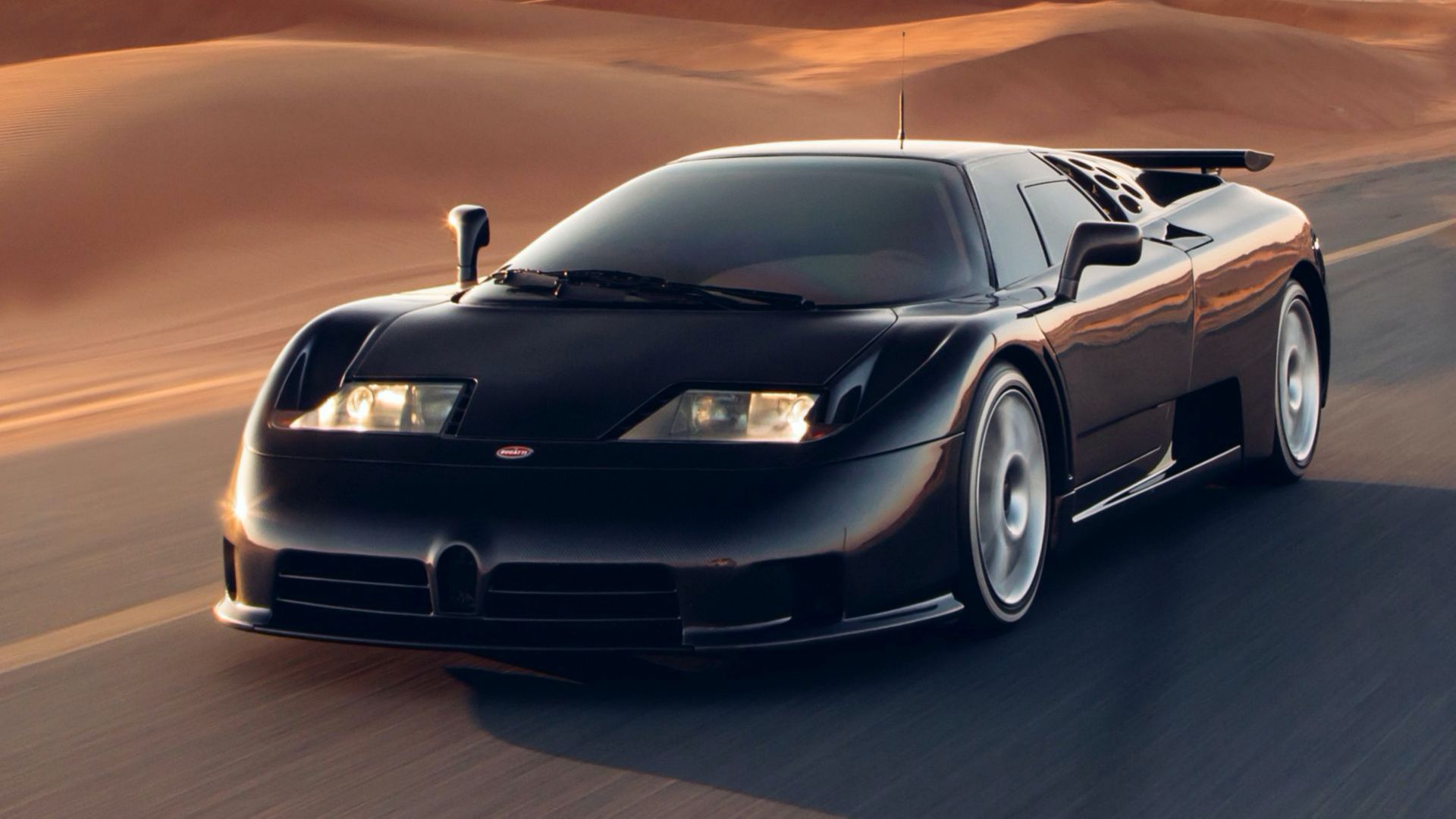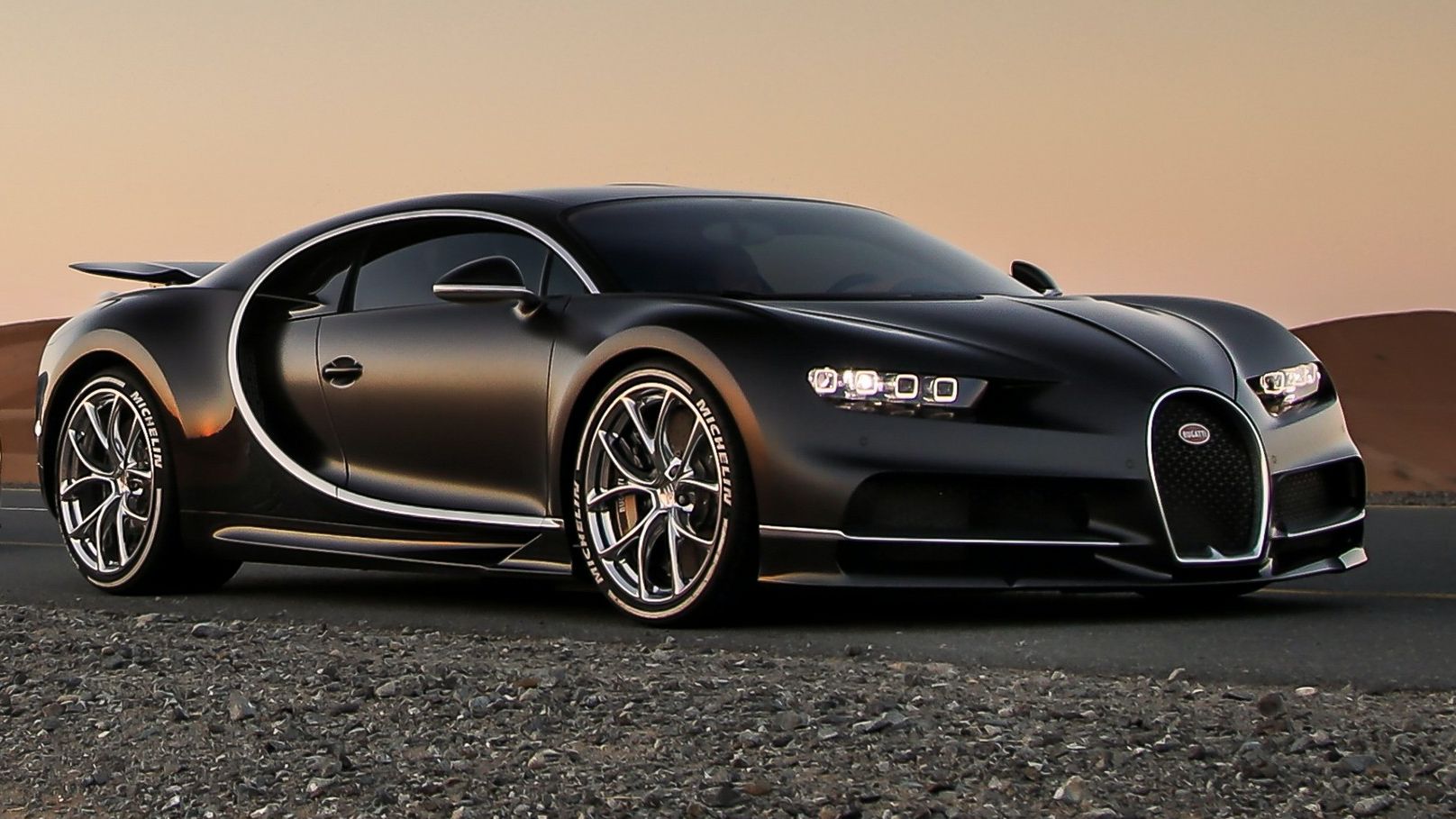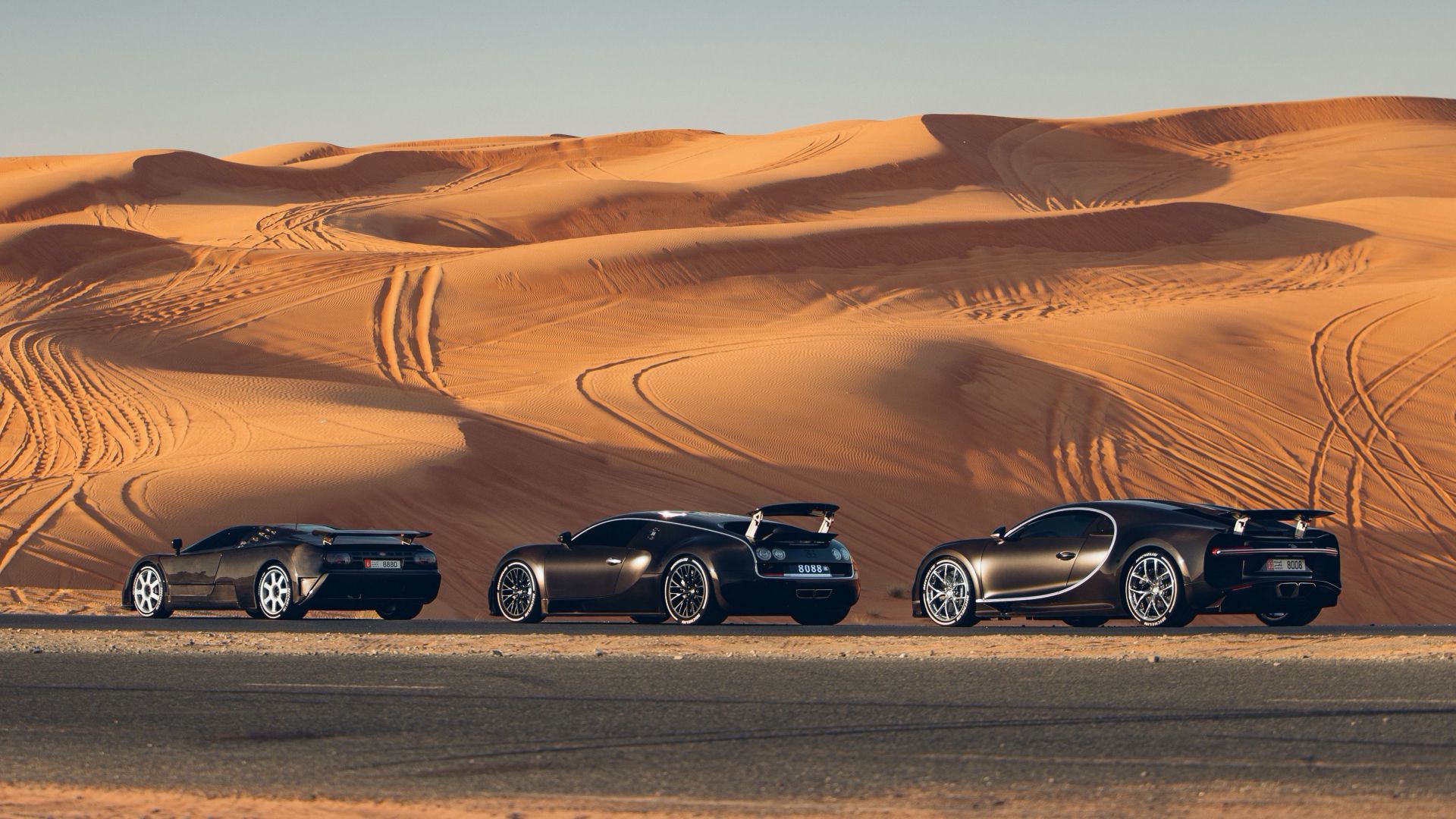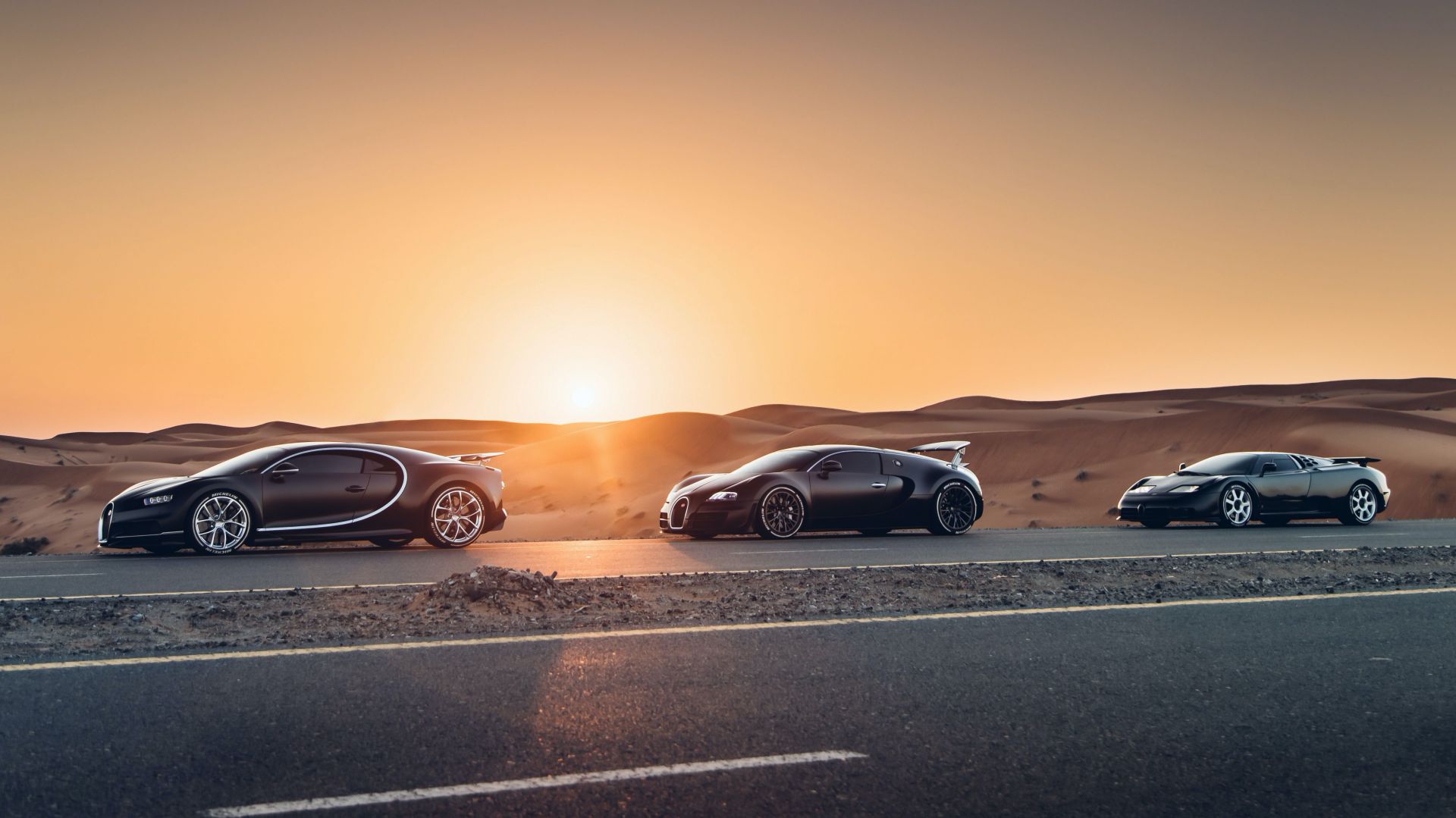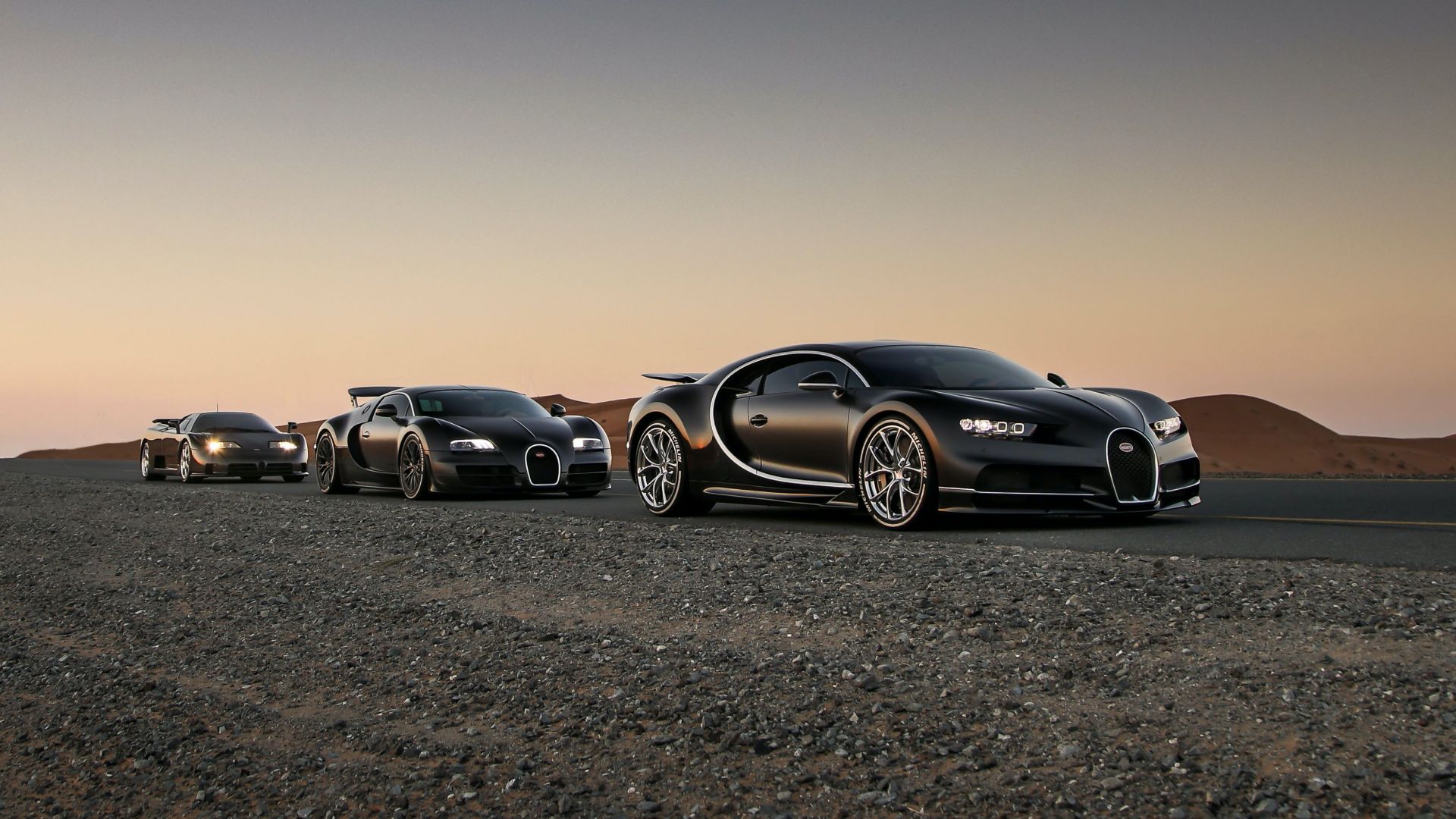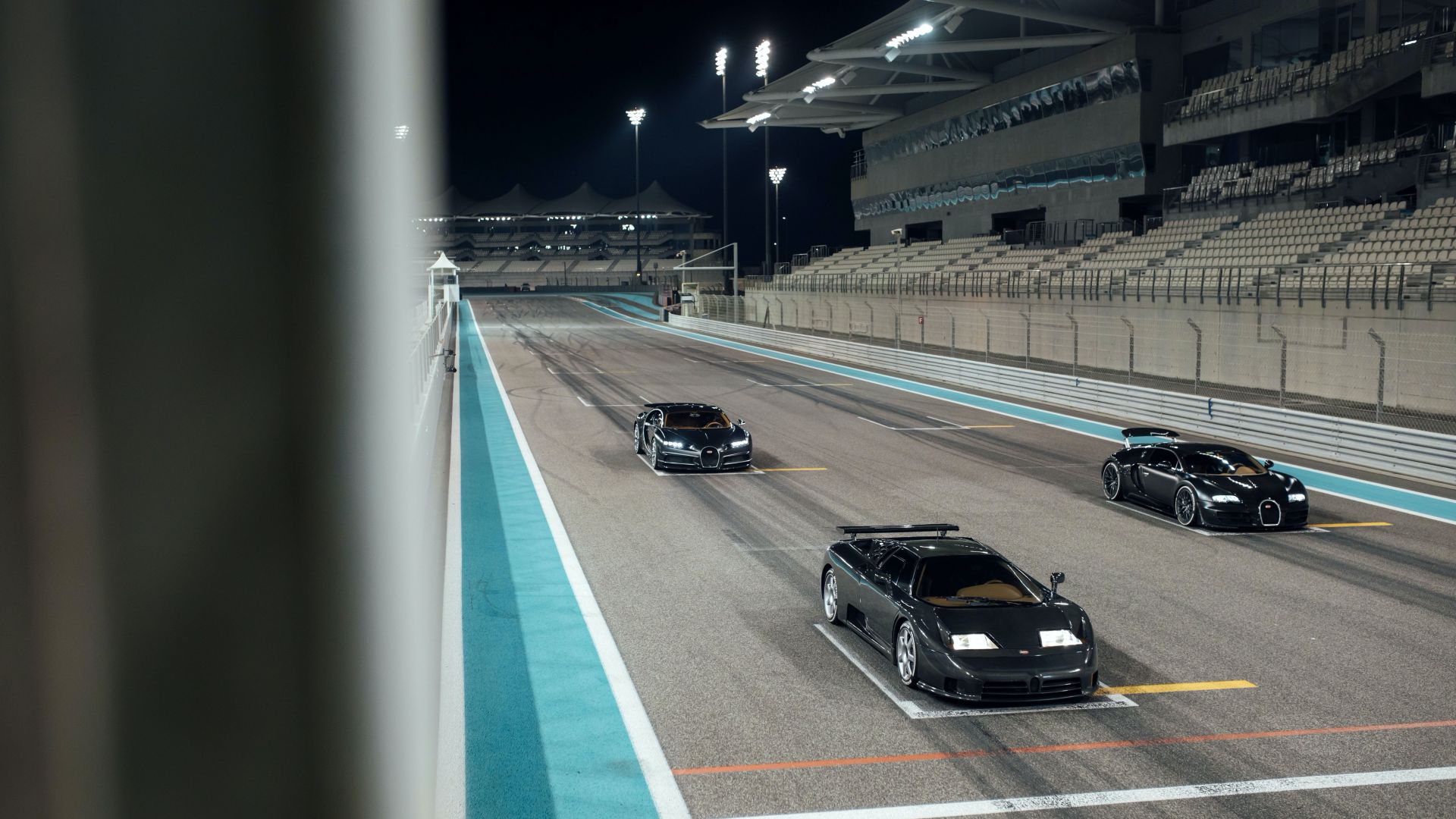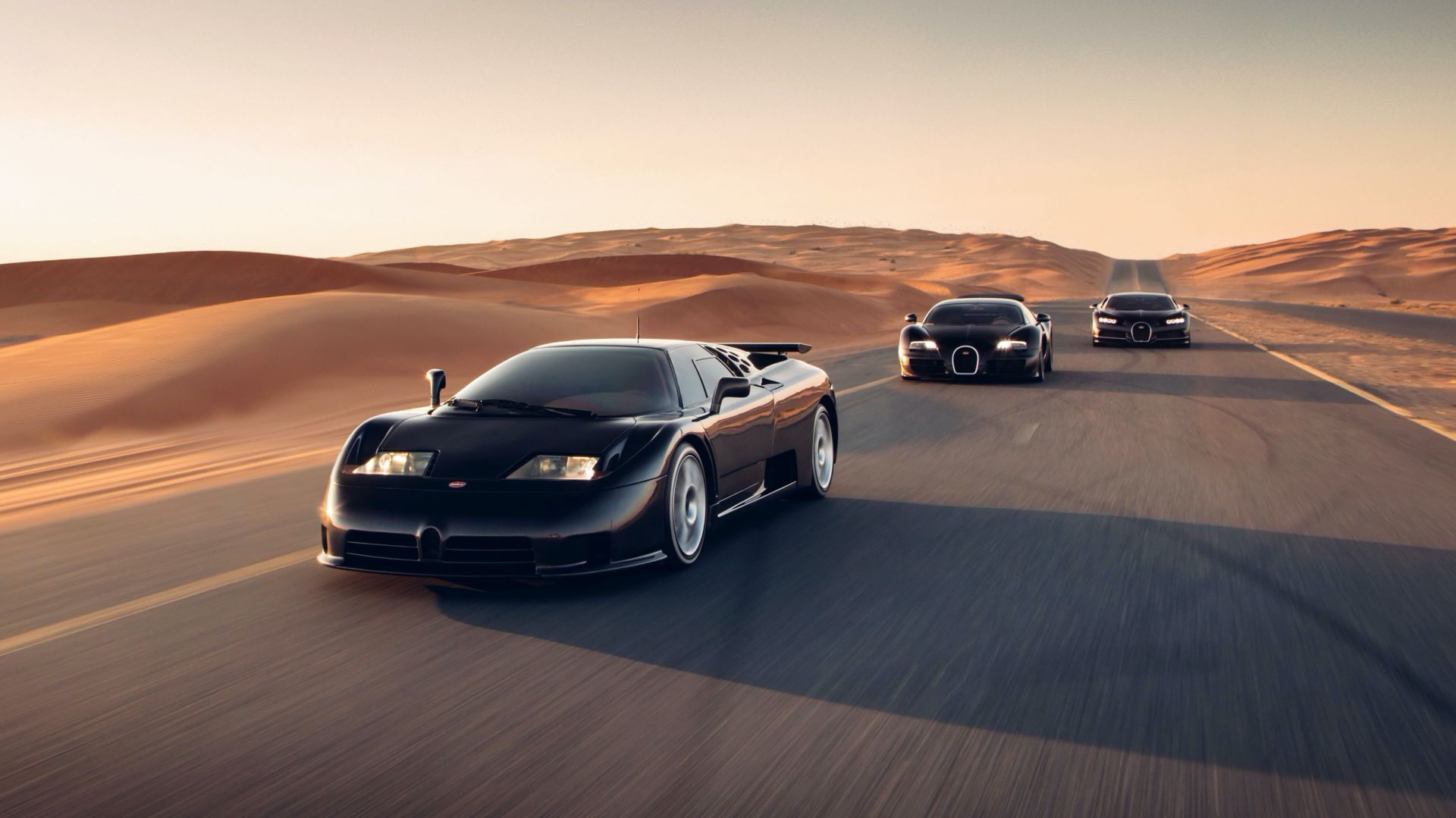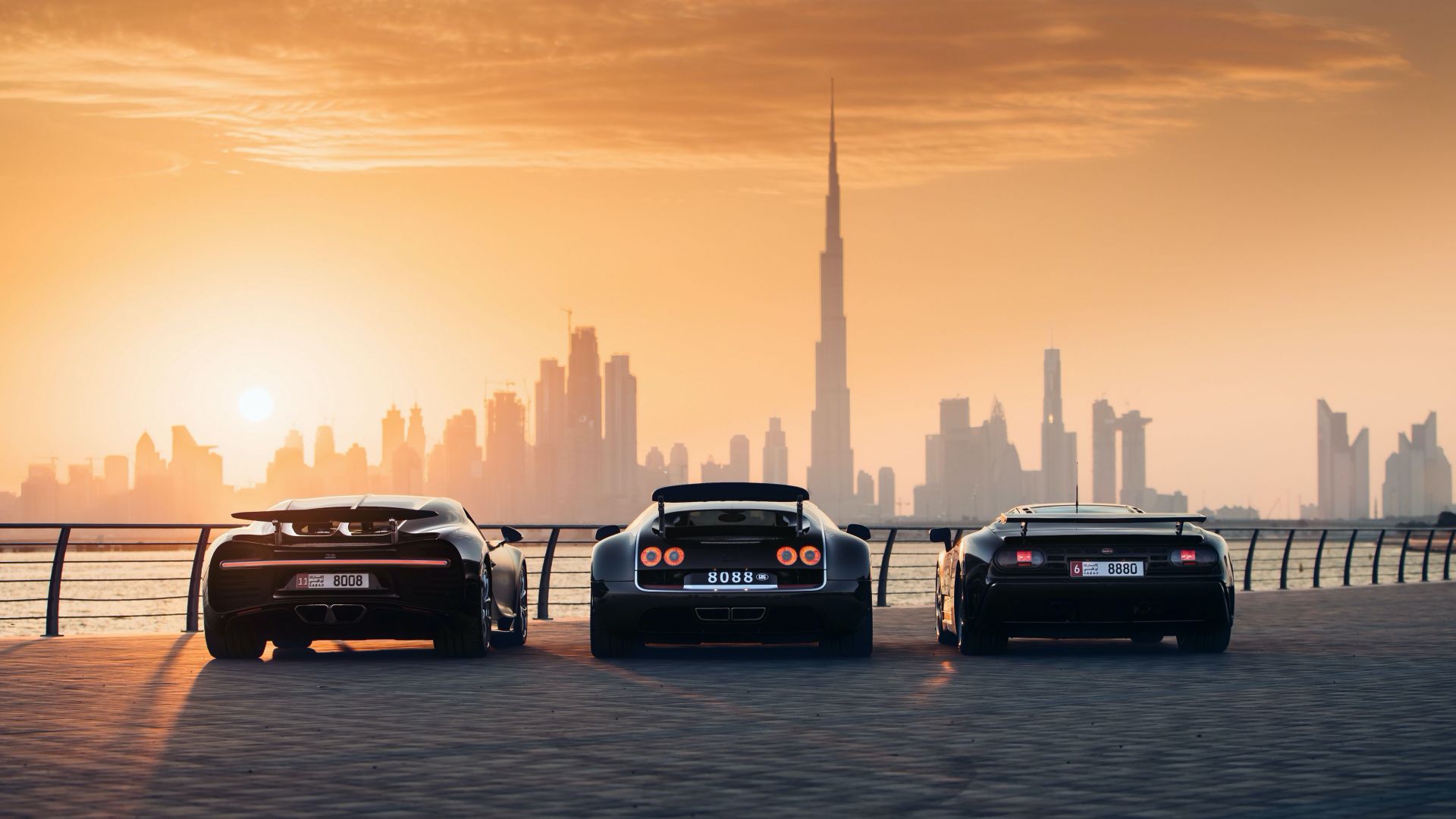With the Bugatti Atelier in Molsheim closed like many other car plants around the world, we can sit back and take a look at three models that have shaped the brand in the 1990s, 2000s and 2010s.
We’re talking about the Bugatti EB110, Veyron and Chiron, which have been reunited for an official photoshoot in Dubai. What do the Bugatti EB110, Veyron and Chiron have in common?
Well, they are all built on carbon monocoques, have four turbochargers attached to their engines, and all-wheel drive systems. Obviously, the Veyron and Chiron have much more in common as the latter is essentially an evolution of the former. A challenge for Bugatti collectors worldwide is to have all these three vehicles in their garages, as they are known as the “Holy Trinity of modern Bugatti”.
Having all three of them come together for a photo shoot is indeed a special occasion, as these cars are rarely photographed together. So let’s see what’s so special about each one.
See Also: Bugattis Assemble! Company Brings Together Six Cars Worth $35 Million
Bugatti EB110 (1991-1995)
The only one in this company that doesn’t come from the Volkswagen era, the Bugatti EB110 was the first super sports car of modern times. Created at the beginning of the 1990s during Romano Artioli’s ownership of the brand, the EB110 was named after Ettore Bugatti and his 110th birthday.
Unveiled in Paris on September 15, 1991, the Bugatti EB110 became the first series-production car to be made of carbon, with its lightweight monocoque weighing just 125 kilograms (275 lbs). The body was made from aluminum and carbon, the wheels were cast from magnesium, and the bolts were made of titanium.
Power came from a 3.5-liter V12 with four turbochargers, sixty valves and a maximum engine speed of 8,250 rpm. 0 to 100 km/h was dispatched in a fantastic (even for today’s standards) 3.26 seconds and the top speed was 351 km/h (218 mph), making the EB110 the fastest series-production car of its time.
By 1995, Bugatti produced only 96 units of the 560 PS (553 hp) EB110 GT, as well as fewer than 40 of the lighter and more powerful 612 PS (603 hp) EB110 Super Sport. Given the low production numbers, the EB110 shot up in value in recent years, with one 1994 EB110 Super Sport racking up €2.03 million ($2.33 million) at a 2019 auction.
Bugatti Veyron 16.4 (2005-2015)
The Bugatti Veyron 16.4, named after French Grand Prix racing driver Pierre Veyron, was much more than a successor to the EB110. Developed during the VW era as a pet project of chairman Ferdinand Piëch, no expense was spared during development. When the Veyron 16.4 launched in 2005, it shocked the world with its unworldly specifications.
Considered by many as the world’s first true hyper sports car, the Veyron was powered by an 8.0-liter W16 quad-turbocharged engine that delivered 1,001 PS (987 HP) and 1,500 Nm (1,106 lb-ft) of torque in its base form. That was enough for a 0-100 km/h (0-62 mph) sprint of 2.5 seconds and a top speed of 407 km/h (253 mph) for the Coupe.
In 2010, Bugatti brought the Veyron Super Sport, which packed 1,200 PS (1,184 HP) and was able to reach 415 km/h (258 mph). It was crowned the world’s fastest series-production super sports car, reaching a top speed of 431 km/h (268 mph) during a special attempt.
Bugatti built 450 Veyrons until 2015, including 48 Super Sports models. Of the entire production run, 300 were coupes and 150 were Grand Sport roadsters. Veyron prices have risen by 30-35 percent on average since its market launch 15 years ago, according to Bugatti.
Bugatti Chiron (2016-present)
The follow-up to the Veyron was also named after an interwar racing driver, Louis Chiron. It arrived in 2016 with a similar configuration to the Veyron. Besides the design, the main difference to its predecessor is that the 8.0-liter W16 quad-turbo engine delivers a maximum power of 1,500 PS (1,479 HP) and a peak torque of 1,600 Nm (1,180 lb-ft).
The maximum speed for road use is limited at 420 km/h (261 mph), though a modified Chiron Sport exceeded the 300 mph (483 km/h) mark in 2019, hitting 304.773 mph (490.484 km/h). Bugatti plans to manufacture a total of 500 Chirons, with over half of them already built and sold. The base price of a Chiron is €2.65 million ($2.9 million), before tax.



